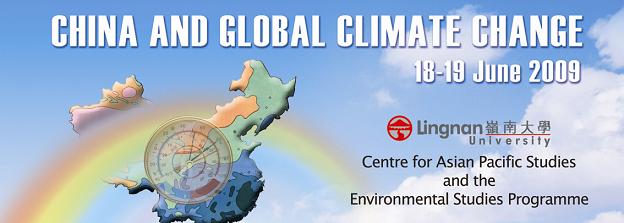
Event Title
Conference on China and Global Climate Change : Reconciling International Fairness and Protection of the Atmospheric Commons
Location
AM 308, Lingnan University
Start Date
19-6-2009 11:00 AM
End Date
19-6-2009 12:30 PM
Language
English
Description
Two facts define China’s status in the global efforts of CO2 mitigation: China has overtaken the United States as the world’s largest CO2 emitter. And as a developing country with low per capita emissions, China will grow into a much bigger one. Accordingly, in the coming Copenhagen negotiation, whether China will accept a legally binding goal is of great importance. China’s CO2 emissions in the past three decades are analyzed in this paper to distinguish two prominent features: abrupt changes and cycles. Abrupt changes break the past trend and make projections into the future unreliable. China has experienced two abrupt changes of CO2 emissions since 1998 – one downward and one upward. A likely future one will seriously compromise the application of an absolute CO2 goal to China. On the other hand, stable cycles characterized China’s CO2 emissions, but the 10-yr period does not overlap with the 5-yr commitment period of the Kyoto Protocol. Intensity goals can much better address these two concerns. A future abrupt change of baseline CO2 emissions intensity is less likely and no cycles are apparent. China has adopted intensity goals in its domestic efforts of energy conservation and environmental protection. A CO2 emissions intensity goal is also being considered, which indicates that intensity goals could have a better chance in persuading China to negotiate a legally binding goal in the Copenhagen negotiation.
Document Type
Discussion
Recommended Citation
Xu, Y. (2009). Predictability and China’s legally binding goal of CO2 emissions in the Copenhagen negotiation. In China and global climate change: Proceedings of the conference held at Lingnan University, Hong Kong, 18-19 June 2009 (pp. 413-421). Centre for Asian Pacific Studies and the Environmental Studies Programme, Lingnan University, Hong Kong.
Included in
Predictability and China’s legally binding goal of CO2 emissions in the Copenhagen negotiation
AM 308, Lingnan University
Two facts define China’s status in the global efforts of CO2 mitigation: China has overtaken the United States as the world’s largest CO2 emitter. And as a developing country with low per capita emissions, China will grow into a much bigger one. Accordingly, in the coming Copenhagen negotiation, whether China will accept a legally binding goal is of great importance. China’s CO2 emissions in the past three decades are analyzed in this paper to distinguish two prominent features: abrupt changes and cycles. Abrupt changes break the past trend and make projections into the future unreliable. China has experienced two abrupt changes of CO2 emissions since 1998 – one downward and one upward. A likely future one will seriously compromise the application of an absolute CO2 goal to China. On the other hand, stable cycles characterized China’s CO2 emissions, but the 10-yr period does not overlap with the 5-yr commitment period of the Kyoto Protocol. Intensity goals can much better address these two concerns. A future abrupt change of baseline CO2 emissions intensity is less likely and no cycles are apparent. China has adopted intensity goals in its domestic efforts of energy conservation and environmental protection. A CO2 emissions intensity goal is also being considered, which indicates that intensity goals could have a better chance in persuading China to negotiate a legally binding goal in the Copenhagen negotiation.

